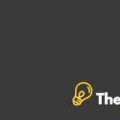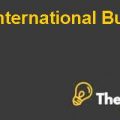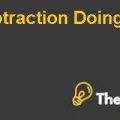
Building on the Change
Millennium did not consider it as a success when the company in so little time achieved good financial results for the efforts that were incurred. The company believed strongly in building the future change by the reflection of its actions. Kotter mentioned that declaring the victory too early can create a hurdle against the behavior of continuous improvement.
Anchoring the Changes
The company made sure that the changes were made in the company shall become their core values and must not deviate while achieving its desired vision. Therefore, Dunsire is considered as the operating leader while focusing its entire business operations for the purpose of the future sustainability at Millennium.
Critical Success Factors
Develop a Clear Vision
Developing a clear vision would allow employees of both the companies to view the broader aspect of acquisition. Delivering a clear vision would not just aid employees in understanding the vision, but also it would aid in the profitable contribution for the success of the company. Keeping their staff motivated requires mentioning the future goals and the future prospects which lied ahead of Millennium.
Business Model
Business model is defined as a way or approach utilized by the company in becoming profitable. This represents a particular process through which the company manages to attain profitability. Therefore, Millennium’s business model was based on selling drugs related to oncology. The company mostly targeted physicians through its sales representatives and achieved revenues by selling its drugs. As mentioned in the case that Takeda’s business is also related to oncology, therefore, the business model would remain similar which would not create any hindrance in the merger of the two companies.
Shareholders Value
The success and failure of the merger and acquisition richly affects the shareholder’s wealth. Therefore, creating a strong value of shareholders and developing a contribution of their opinions in the particular decision shall be enforced (Weber, 2012). Preserving their values prevents the company from further financial turmoil and it also allows the funds to flow for future projects. The two companies need to maintain a close interaction with its investors, and more importantly the Wall Street which includes the entire stakeholders for the company because they all are affected by the decision made by Takeda Pharmaceuticals.
Governance
The working of the two organizations is critical to the success of both the companies. The governance structure defines the ruling mode for the two organizations. Previously, Millennium had a decentralized approach as the decision had flowed from the middle level managers to the top executive (Sherman, 2010). The company applied a horizontal integration where different heads of each department were directly reporting to the CEO of the company as they were all considered at the same level. Therefore, if Takeda’s strategy contradicts with that of Millennium then the company shall allow Millennium to work as a separate entity and it shall not interfere in the company’s matter. Although the company can devise future goals of the company while outlining the targets it would need to achieve in following years. However, if similar organizational structure exists in Takeda then it would find ways to align their culture and the working trends according to the company’s trends and culture.
Existing Operations
Weber (2012) suggests that while performing merger and acquisition, the parent company shall evaluate the performance of the current operations applied in the acquired company. This would inform the parent company in understanding the core competencies for Millennium (Weber, 2012). The evaluation process would outline the key strengths and weaknesses for the company which might in turn would result in developing the strategies accordingly. Moreover, this process is critical to the success of the acquired company because employees resist a sudden change in the organization which results in lower productivity. Gradual changes must be adhered and the strategy for informed and long term changes shall occur to avoid the circumstances of uncertainty.
People and Culture
As Millennium valued its people in attaining the recent success for the company, therefore, this ensures the importance of employees in carrying out the key business practices for the company. Continuously motivating and retaining employees shall remain the strategy for Takeda if it has to gain the support of the organization in meeting its vision. This could be done by Collaborating with employees and providing them similar compensation plans and offers in order to motivate and retain them in order to carry out their future tasks. The business culture of Millennium is based over the act of leaders and an uninterrupted flow of information through each department. Integration was made proficient so that the key decisions which shall be taken by the company must be embedded in the entire organization....................................
This is just a sample partial case solution. Please place the order on the website to order your own originally done case solution.












